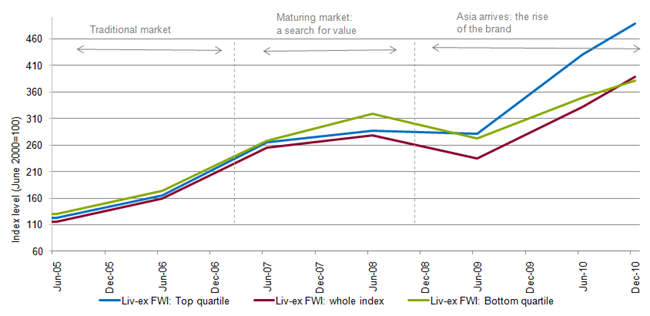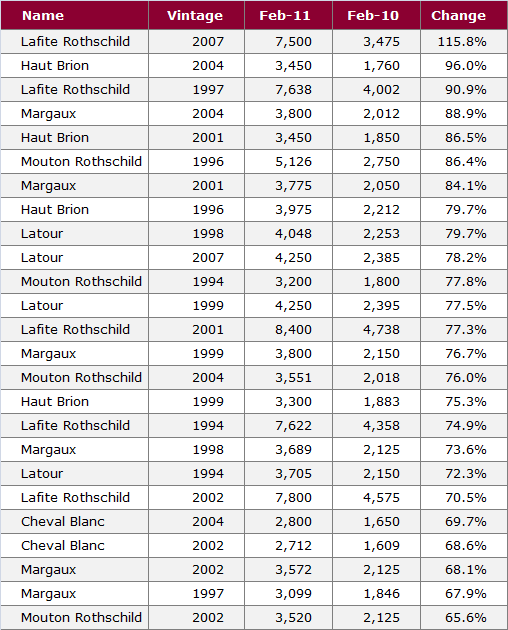In the main, fine wine investors tend to focus on identifying wines that offer value, but is this really the most effective route to success? Those who favour momentum-based investing prefer to use past performance as a guide to future returns. As discussed in the March Market Report, this approach involves buying the prior period's top-performing shares or products, and has been touted as a potentially successful strategy for investing in various markets:
Last year, a team from the London Business School looked at the price evolution of the 100 largest stocks in the British market since 1900. The study calculated the returns achieved from holding a portfolio of the 20 best performers over the past year, rebalancing the portfolio every month. They found that a portfolio managed in this way would have grown from £1 to £2.3 million by the end of 2009. A repeat of this exercise with the focus on the 20 worst performers led to a final sum of just £49. This “momentum effect”—which goes against the efficient market hypothesis that everything is fairly priced—has also been noted in the currency markets and in the pricing of various commodities.
In last month’s report we attempted to test out whether or not this investment style would produce robust returns if applied to fine wine. For our dataset, we used the components of the Liv-ex Fine Wine Investables Index (top-scoring wines from 24 leading chateaux). Starting in June 2000, we created a portfolio of the best-performing 25 per cent from the previous 12 months (the top quartile) and rebalanced it at the end of June each year. The result? A portfolio managed in this way produced a return of 390 per cent by December 2010, outpacing the bottom quartile (at 280 per cent) as well as the Liv-ex Fine Wine 50 over the same period (+351 per cent).
Despite these rather impressive results, a look at the graph below (which shows the performance of each portfolio in index format) reveals that this is a relatively new phenomenon. Up until the market shock of 2008, it was the bottom quartile that tended to show the better subsequent returns.

One possible reason for this shift from value to momentum is that the main driver of demand has changed. Since 2008, Chinese buying has had a powerful effect on the fine wine market – largely due to a greater emphasis on brand, rather than vintage or score. Those wines that see an increase in pricing now tend to carry on rising for a year or more. But whilst this strategy may indeed be profitable, studies in other markets suggest that relying on momentum increases risks as well as returns.
Those who are interested in the momentum-based approach can find the past year's top 25 performers from the Liv-ex Fine Wine Investables Index below.






